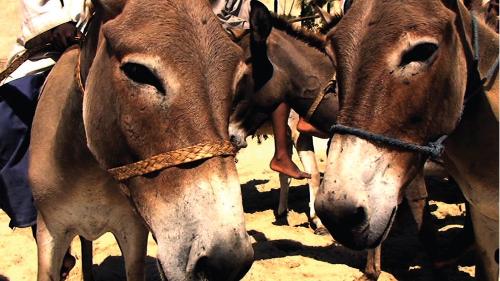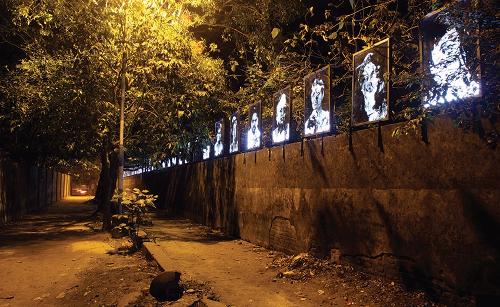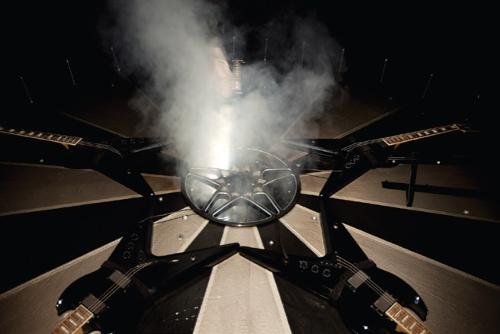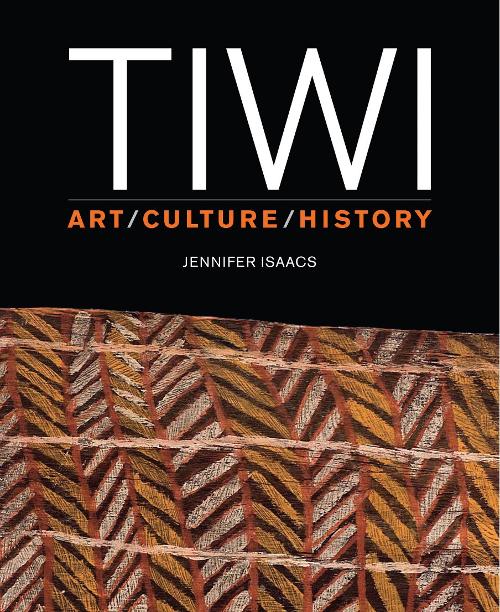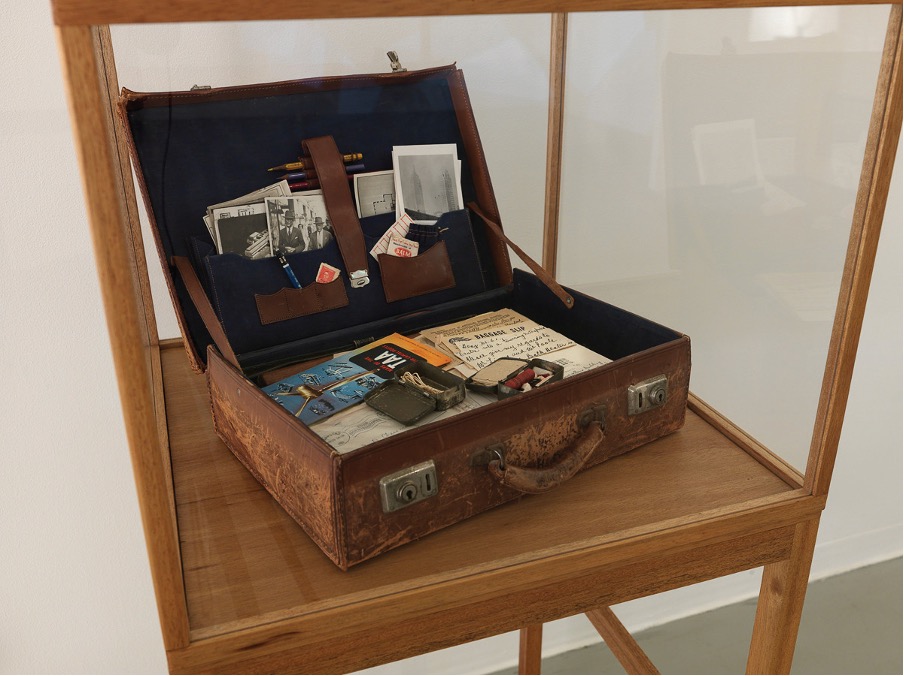
Curated by Vivonne Thwaites working with the Architecture Museum's Christine Garnaut and Julie Collins, Build me a city was the culmination of artists Jacobus Capone, Kirsten Coelho, Nici Cumpston, Nicholas Folland, Lily Hibberd, Sandra Selig and Sera Waters gaining access to the Architecture Museum’s archives at the University of South Australia and using their research as the impetus for creating new works that explore place and time. Both research and new work are displayed alongside one another. The slightly disjointed installation with angled dividing walls sections off the space, creating narrow passageways and alcoves, producing private areas for individual discovery. Yet the exhibition is still cohesive, with exciting dialogues occurring across and between works.
One such discourse explores the challenges of the early European settlers in Adelaide. Coelho’s evocative, intimate works delve into the settler’s preconceived ideas of Australian life, which were so unlike their actual lives in Australia. With their lush, pastoral, European images the series of photographs of excavated ceramic shards, Dreams of Leaving, contrasts with the Australian landscapes captured in Cumpston’s landscape works installed on the adjacent wall. Coelho also captures the adaptations consequently required by the settlers in Oil can, cup, funnel, bottle, bowl, a series of fragile ceramic recreations of familiar, domestic enamel wares.
Alternatively capturing the unique beauty of Australia as a place of habitation, are the hand-coloured photographs of Cumpston, Settlement view and Shards, drawing the viewer in as soon as they enter the gallery. These works arise from the artist’s time in her Barkindji family’s country in the desert of central western New South Wales. Consequently, they give the viewer insight into the artist’s love for her land as she captures its natural splendor and majesty, of particular significance to Cumpston, as a place of dwelling and personal belonging. Also drawing on family connections discovered in ancestral correspondence and concentrating on the spiritual lives of early settlers, Sera Waters’ research centres on the Gothic-styled Stow Memorial Congregational Church in Flinders Street. Exploring transcendence and light, the delicate detail of Waters’ engaging interactive works could melt the most cynical of hearts with their wit and poignancy.
Meanwhile, Folland and Hibberd’s works lead the viewer on journeys, Folland’s is literal and Hibberd’s conceptual. The historical resource selected by Folland, Jack Cheesman’s briefcase, held the architect’s valued and frequently used possessions, providing insight into its owner - a personal highlight of the museum pieces. As mentioned in Folland’s artist statement, the briefcase contained no formal measuring equipment, only string, and his cat’s cradle-like sculptures, which, like the game, capture structural and figurative forms, reflect the creative work of Cheesman. These works were challengingly hidden, either in unconventional positions or with transparent string that blended into the walls. Threshold (keys), Folland’s other work, consists of potentially hundreds of keys hanging on the gallery door, suggesting unknown possibilities waiting to be unlocked.
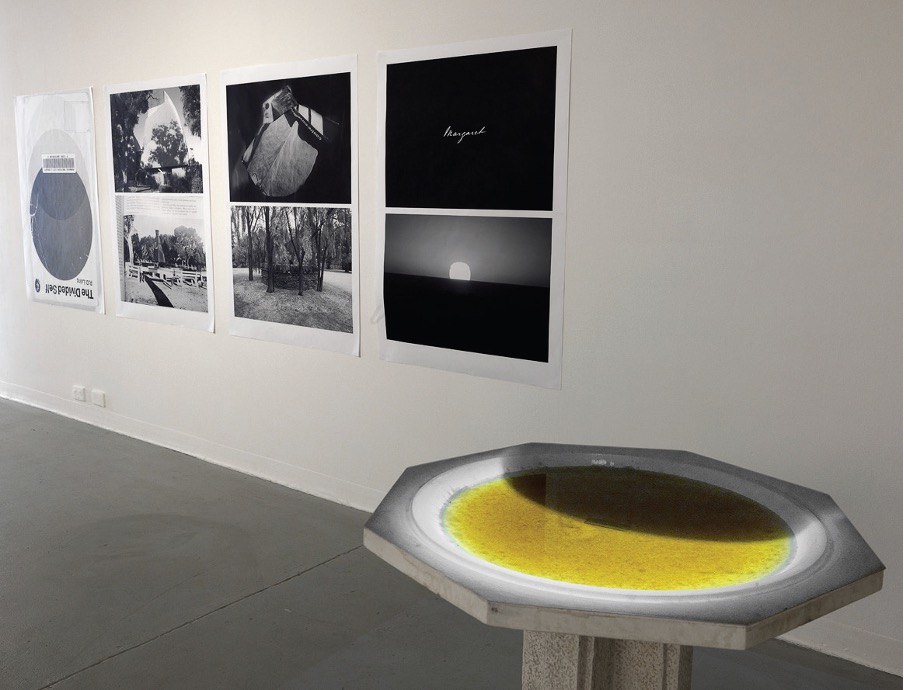
Hibberd’s installation, Coup de Soleil, interweaves fact and fiction, past and future as she maps out and documents a journey seeking connections amongst some of the historical sites of North Terrace. She explores the devastating story of a young woman committed to the lunatic cells at Adelaide Gaol. It’s an enthralling investigation into the iconography and paradoxes of institutions of supposed 'care’ and penal confinement. This work compels viewers to reconsider Adelaide’s well-trodden streets and familiar buildings. Sound too plays a part in the interconnections of the exhibition. Capone provides the dominant, soothing soundtrack with his installation ‘liberating’ a series of untitled house plans. Selig’s mesmerising projection Continuous Corner is accompanied by what sounds like sliding paper. Both works are successful in holding the viewer in the space as they provide another dimension of sensory stimulation within the exhibition.
With the variety of approaches and disciplines and the high calibre of the artists it is clear that Build me a city was expertly curated. In fact the exhibition offers the viewer an unusual and valuable opportunity to delve into intricate reflections on time and place – provided they make time to carefully explore all its facets and its secret entities (somewhat like the city it reflects). Yet making the effort to engage with this exhibition brings its clear reward: the process of reflection it engenders on Adelaide’s and Australia’s architectural and human past is a stirring and fascinating experience.

